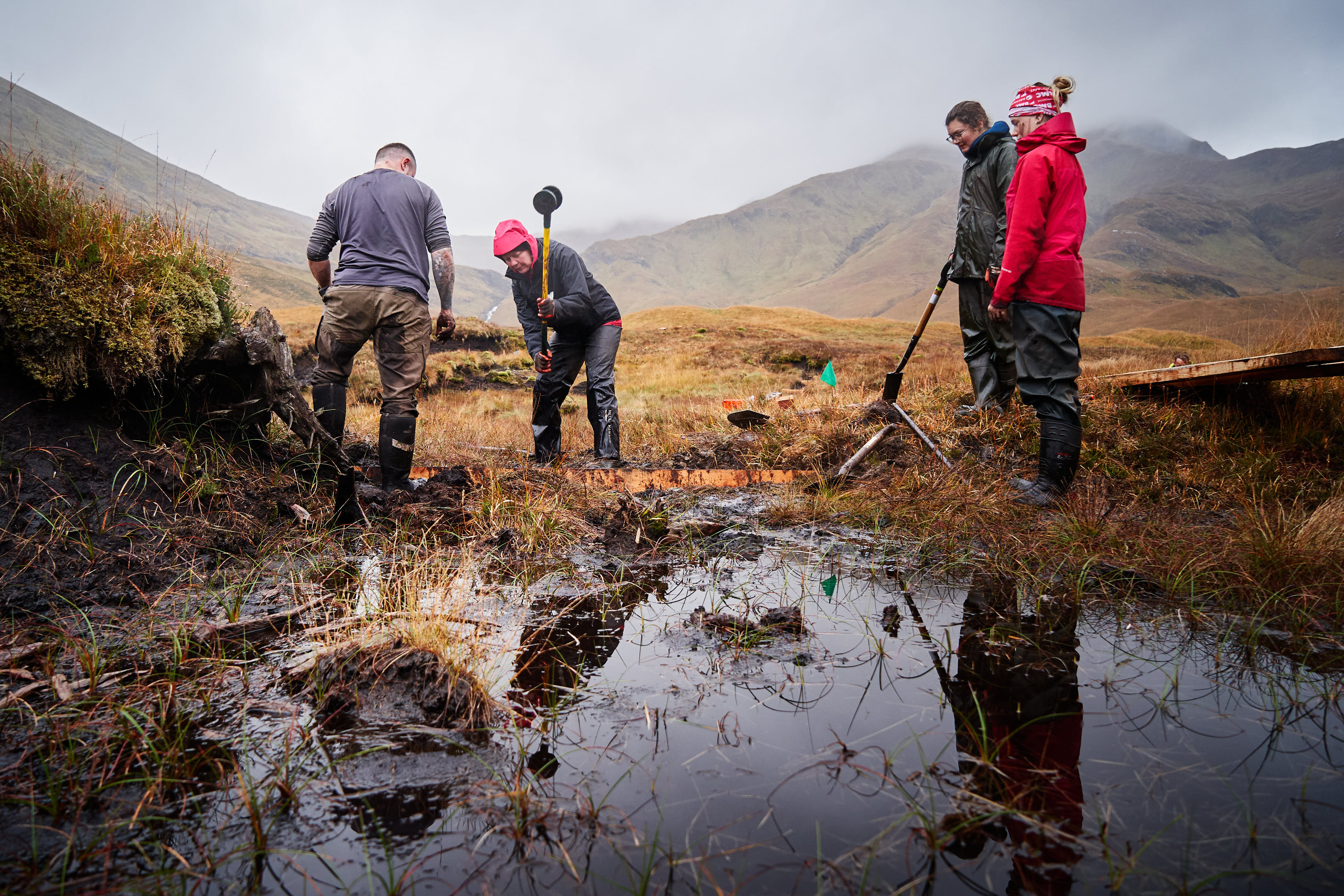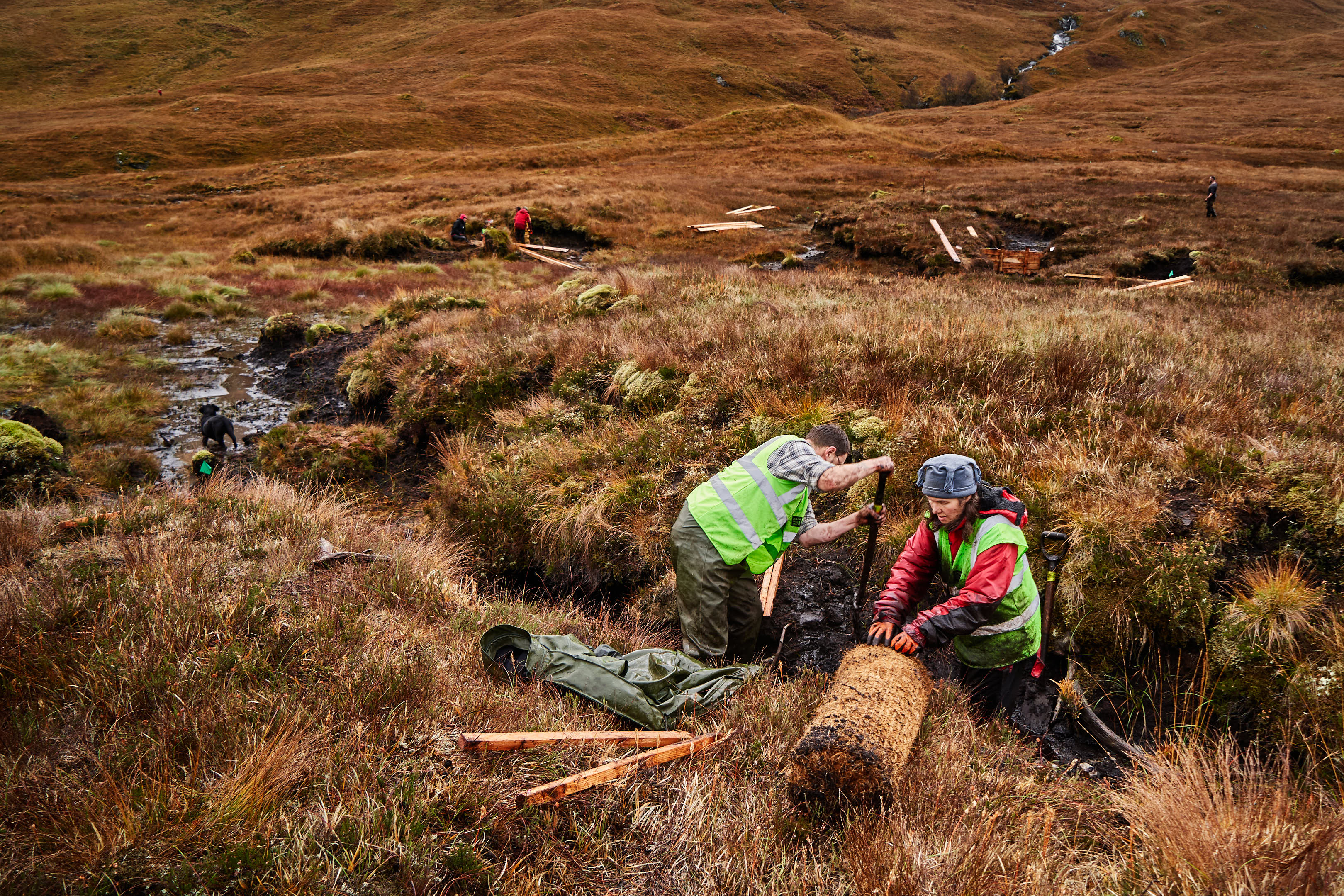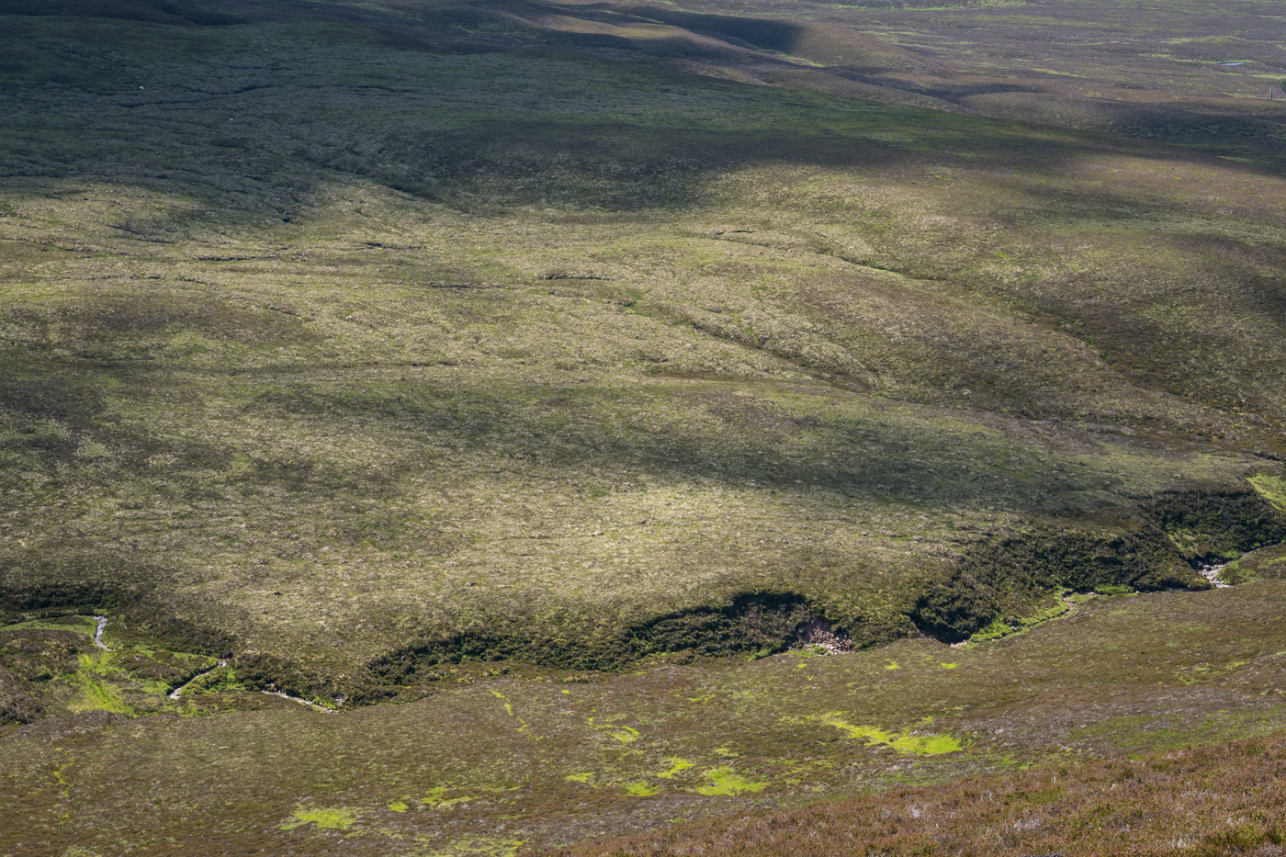Field Notes: Peatland restoration
The Trust’s Carbon Officer Intern Tom Martin gets up close and personal with a peat bog in Glen Nevis.

I spend a lot of time thinking about peat - as a habitat to be restored, as a landscape to be protected and as a key matter in land policy.
Despite occupying only three per cent of the planet’s surface, peatland accounts for 30 per cent of its carbon store. However, while healthy peatland can store huge quantities of carbon, degraded peatland soils leach carbon into our warming atmosphere.
Aware of my limited practical experience of bogs, I leapt at a chance to join a group of volunteers in Glen Nevis for a soggy day of helping to restore peatland that had been degraded from grazing by deer and livestock.
When peatland becomes degraded – or hagged – the flows of water move more quickly causing erosion and exposing the peat. My job was to help dam these small flows by using coire logs made of coconut husks. This is intended to move the hydrology of the area closer to its original state, allowing the peat to regenerate.
Peat accumulates extremely slowly - at around one millimetre per year. With the grass and sphagnum moss tufted hags towering above head-height, I was aware of the enormity of the challenge posed by restoration.

Our work was done relatively quickly, with contractors from ACT Heritage starting the previous day and finishing up the day after. That said, the Glen Nevis peatland restoration work was the result of a four-year project.
Mud-clad, soggy and happy, my time was spent pinning the coire logs in place with wooden stakes and watching others tackle the larger flows by building leaky wooden dams to slow the flow of the water. I then wandered over to see the stone dams that had been built the previous day by our skilled contractors - marvelling at how they managed to lug heavy rocks while more than knee deep in claggy peat.
Positive action for peat
While the John Muir Trust completes peatland restoration projects and manages deer numbers on the land in its care, elsewhere the outlook isn’t so positive.
Peatland is often under threat from development. For example, there are concerns that many windfarms - when built upon peatland - may release significant quantities of carbon and reduce their propensity to offset emissions.
To encourage other landowners to leverage peatland to tackle the climate and biodiversity crises, we propose introducing a Carbon Emissions Land Tax in Scotland. This would impose a tax upon landholdings over 10,000 hectares, banded in relation to the quality of land management for carbon sequestration.
- Find out more about the proposed Carbon Emissions Land Tax.
- Find out more about peatlands.
- The peatland restoration work at Glen Nevis is happening thanks to the generous response to our Nevis 21 Appeal and Peatland Appeal.

Protect wild places
Help us defend wild places and campaign for their protection

